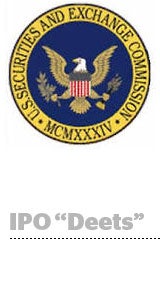 Twitter’s IPO filing is no longer “confidential” as the microblog released its full S-1 document with the SEC that details its plans to sell $ 1 billion worth of stock. Twitter, which recently acquired mobile supply side platform MoPub and unveiled its own version of an ad exchange with several API partners, will trade under the ticker symbol TWTR. The company did not offer a range of share prices in this filing.
Twitter’s IPO filing is no longer “confidential” as the microblog released its full S-1 document with the SEC that details its plans to sell $ 1 billion worth of stock. Twitter, which recently acquired mobile supply side platform MoPub and unveiled its own version of an ad exchange with several API partners, will trade under the ticker symbol TWTR. The company did not offer a range of share prices in this filing.
In addition to the MoPub deal, Twitter has also recently added CBS as a marketing partner, highlighting the value of the microblog as a “second screen” tool for marketers and broadcasters. But as the filing makes clear, mobile is front and center when it comes to driving revenues. In the first three months of the year, way before the MoPub purchase, Twitter said it derived 65% of its revenues from mobile devices. It is telling investors that it expects that percentage to rise quickly in the short term.
Twitter’s revenues for 2012 were $316.9 million, for a loss of $79.4 million. In the first half of 2013 the company earned $253.6 million for a loss of $69.3 million. The company said it generated 85% and 87% of its revenue from advertising in 2012 and the six months ended June 30, 2013, respectively.
In terms of users, Twitter said that it currently has 218.3 million monthly active users and those users have created more than 300 billion tweets. The company also said that in the second quarter of 2013 there were approximately 30 billion ‘online impressions’ of tweets off of its properties.
That Twitter remains unprofitable is not much of surprise, considering the fact that the company’s revenue focus up to last year had been small and cautious. The losses are were also to be expected when Twitter used what was until recently an obscure securities regulation that allowed it to file a “confidential” IPO with the SEC that left its financial picture largely undisclosed. The law, Jumpstart Our Business Startups (JOBS) Act, was enacted during the recent recession and was designed to make it “safer” for small companies that had under a billion in revenue to explore going public without the level of immediate scrutiny that comes with an initial filing.
At this point, Twitter has its investors story as settled as it’s going to get in the near term.
In any case, the ad industry is likely to be less judgmental about Twitter’s stock than investors. And no matter how well — or poorly — TWTR trades when the stock starts landing on Wall Street, advertisers are expecting only positive things from the new public company. After all, they’ve been waiting for years for Twitter to help them figure out mobile marketing and as those quarterly earnings calls get scheduled, Twitter will be pushed by investors to accelerate its revenue production even more rapidly.
That will mean Twitter will not only chart a path with MoPub to develop its mobile ad exchange, but it will be doing a lot more deals with traditional media companies like last month’s addition of CBS to the Twitter Amplify marketing program. Twitter introduced the Amplify initiative last year by working with ESPN and Ford. In the first iterations of that program, ESPN would tweet clips sponsored by the automaker. Broadcasters hope that mixing live TV content with Twitter’s reach could provide significant brand lift, though evidence has been fairly unclear.
“Twitter is so ingrained in the culture, especially for people under 40, plus its traction in the mobile space in general, only bolsters my confidence in them,” said Sean Finnegan, CEO of The C4 Group, a digital consultancy. “And I’m not alarmed that they’re still in the investment mode and are putting their resources toward that. As they build out a wider user base, I’m certain that there’s only big growth ahead of them.”
If there are any qualms about Twitter, it’s the question of how it’s able to impact brands. But as the common platform for content distribution, Finnegan said he expects much of Twitter’s concentration to be centered on publishers first, with ad support following.
“As a public company, Twitter will not only be better able to accelerate its expansion among users, publishers and advertisers,” Finnegan added. “And with the added attention and disclosure, they’ll have to explain their value to the marketplace. Ultimately, as that happens, Twitter becomes much less confusing to the public at large, as opposed to the media savvy users who make up much of the posting.”











